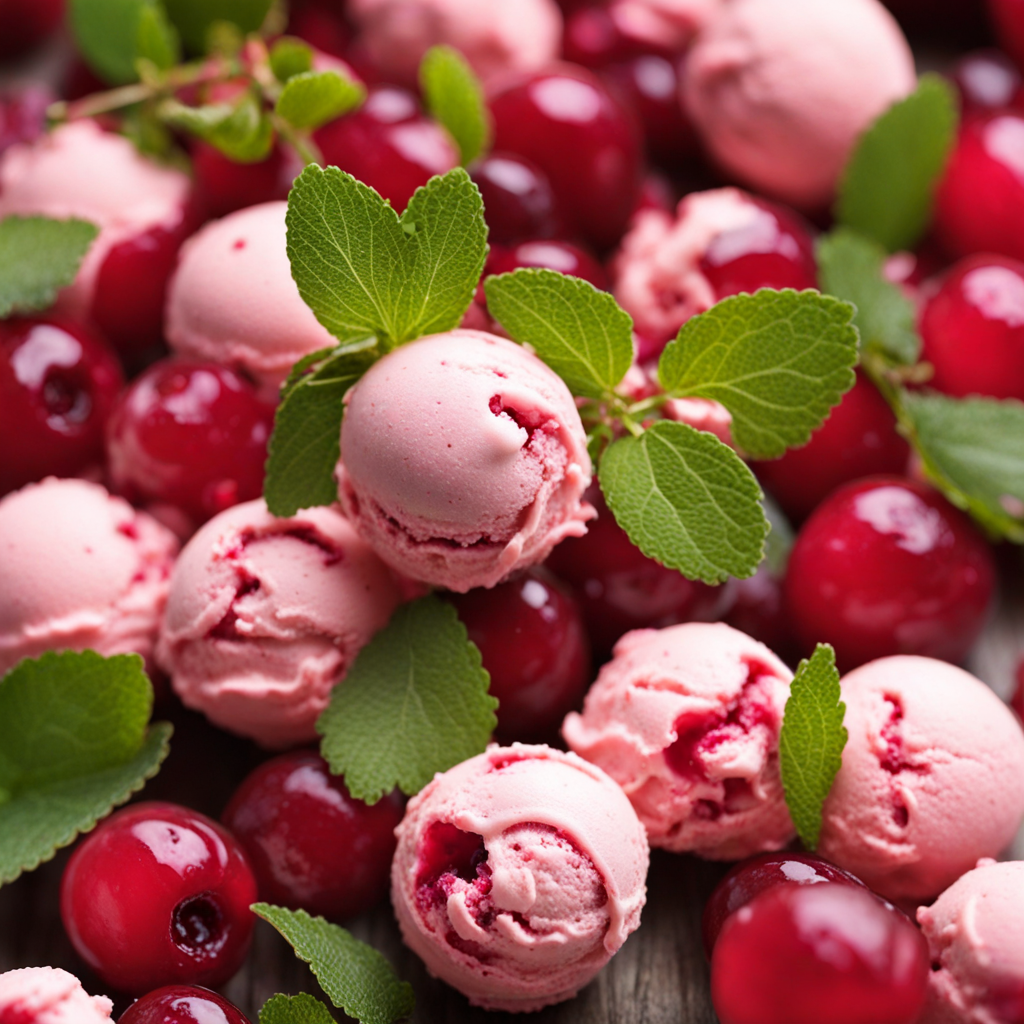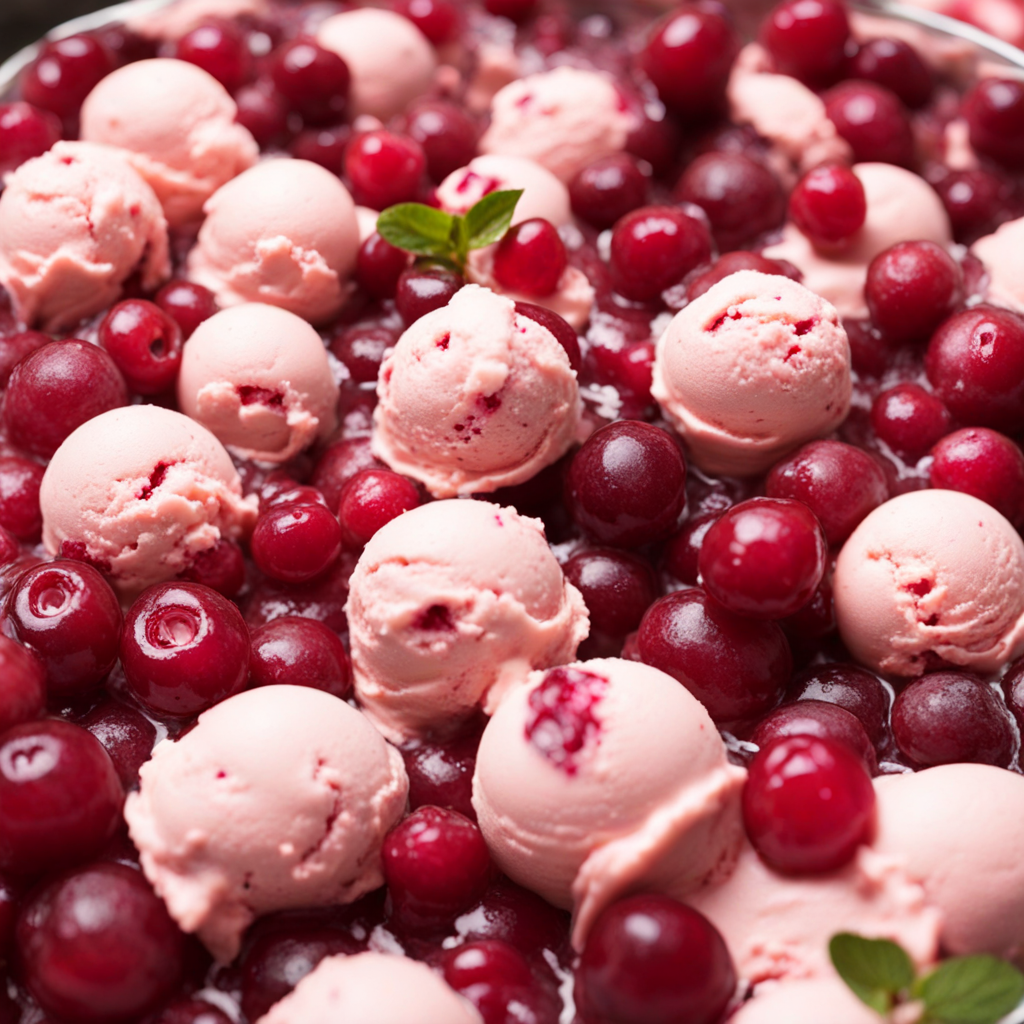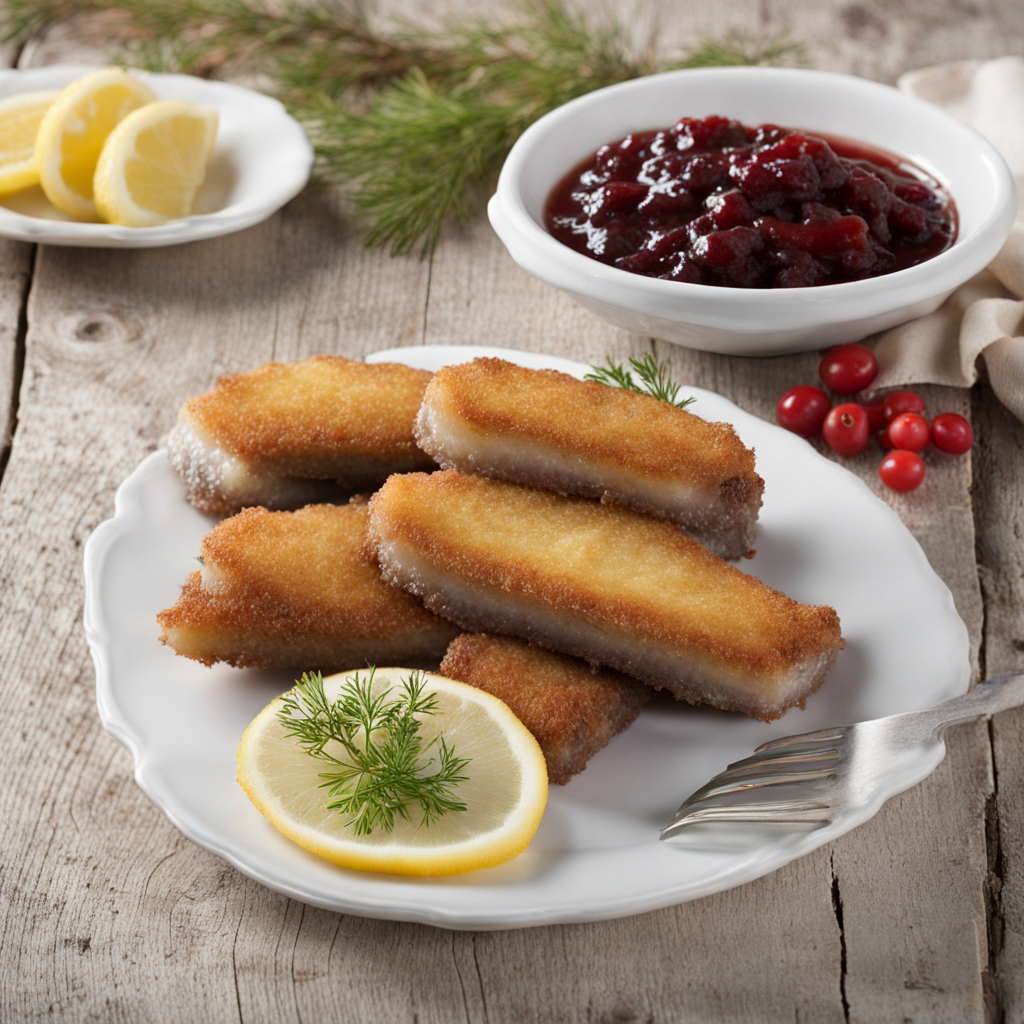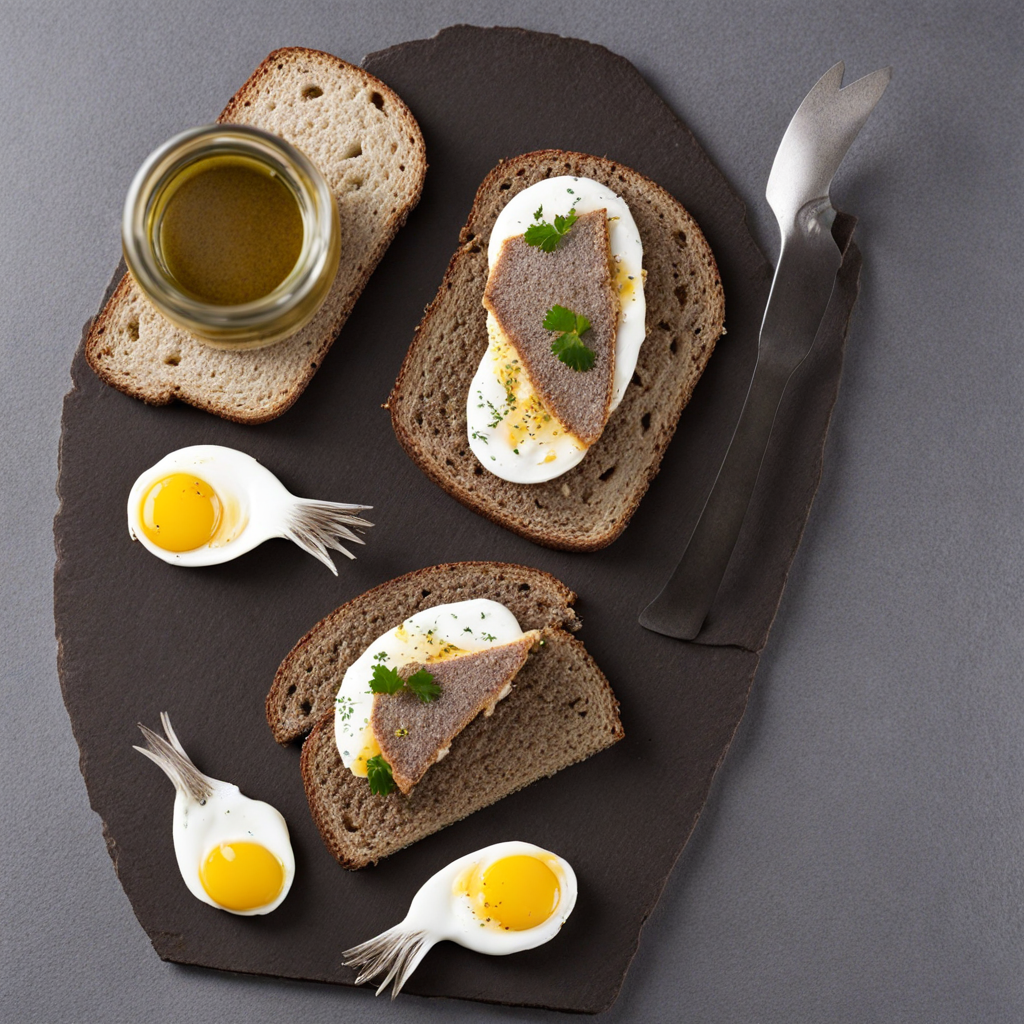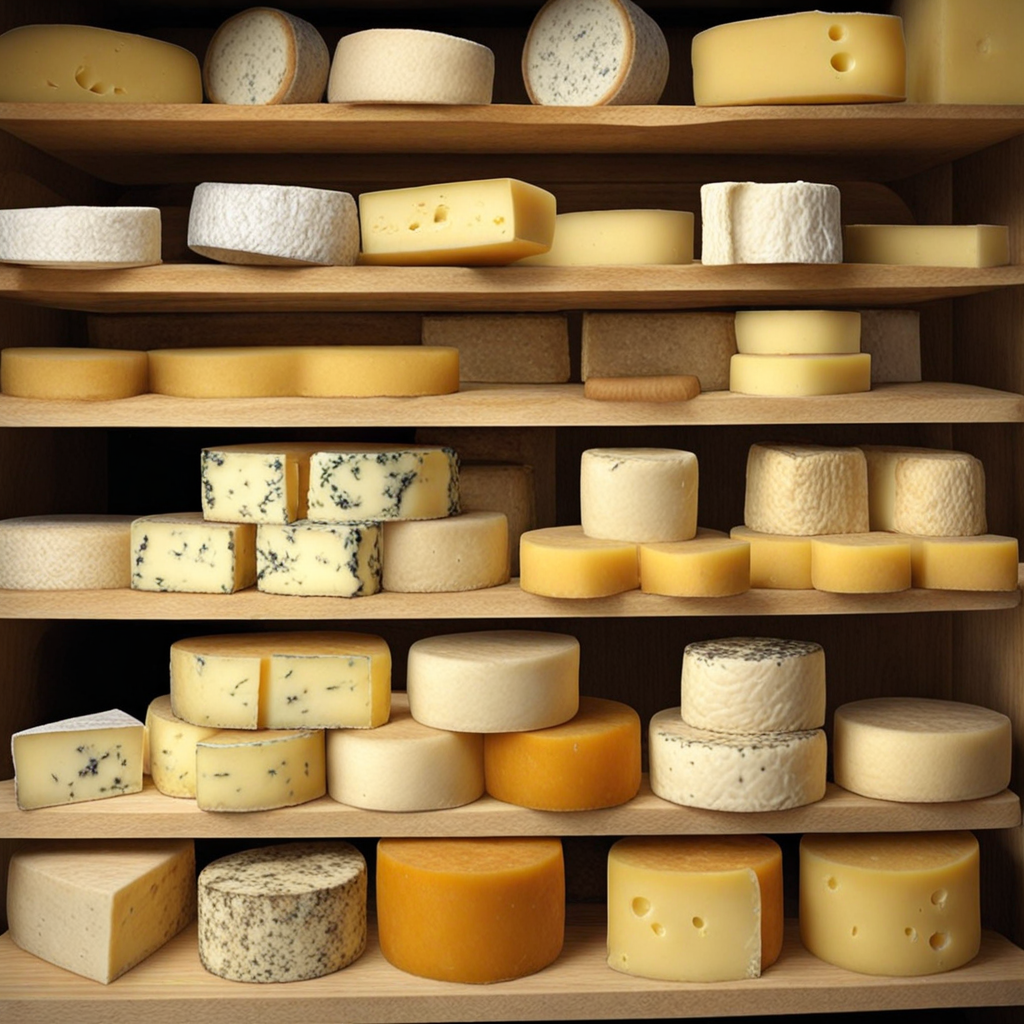Swedish Lingonberry Ice Cream
Swedish Lingonberry Ice Cream is a delightful dessert that beautifully encapsulates the essence of Scandinavian flavors. The base of this ice cream is creamy and rich, providing a smooth canvas for the vibrant tanginess of lingonberries. These small, red berries are a staple in Swedish cuisine, known for their tart yet slightly sweet profile, reminiscent of cranberries but with a unique depth. When blended into ice cream, they create a striking contrast against the luscious creaminess, making each bite a refreshing experience that dances on the palate. The preparation of Swedish Lingonberry Ice Cream often involves simmering fresh or preserved lingonberries with a touch of sugar, allowing their natural flavors to intensify. This vibrant mixture is then folded into a rich custard base, which may include egg yolks for added creaminess. The result is an ice cream that is both indulgent and refreshing, making it an ideal treat for warm summer days or as a unique dessert for special occasions. The visual appeal is also noteworthy, with the rich cream interspersed with hints of deep red from the lingonberries, creating a beautiful and inviting dessert. Serving Swedish Lingonberry Ice Cream can be a true celebration of flavors. It pairs wonderfully with traditional Swedish dishes, such as meatballs, offering a delightful contrast to savory flavors. Garnishing the ice cream with whole lingonberries or a drizzle of lingonberry sauce enhances its presentation and adds an extra burst of flavor. This ice cream not only provides a unique taste of Sweden but also invites you to savor the balance of sweet and tart, making it a memorable culinary adventure.
How It Became This Dish
The Enigmatic History of Lingonglass: Sweden’s Beloved Lingonberry Ice Cream Lingonglass, a delightful Swedish treat, encapsulates the rich tapestry of Sweden’s culinary heritage and its deep connection with nature. This unique ice cream, made primarily from lingonberries, is not only a refreshing dessert but also a symbol of Swedish culture and the changing seasons. To understand Lingonglass fully, one must delve into its origins, cultural significance, and its evolution over time. #### The Origins of Lingonberries Lingonberries (Vaccinium vitis-idaea) are small, red, tart berries that grow abundantly in the forests of Scandinavia. These resilient berries thrive in the cold climates of Sweden and are traditionally harvested in late summer and early autumn. The indigenous Sámi people were likely the first to utilize these berries, incorporating them into their diet and traditional medicine. They recognized the nutritional value of lingonberries, rich in vitamins C and E, antioxidants, and dietary fiber. Lingonberries have been part of Swedish cuisine for centuries, often paired with savory dishes like meatballs, game, and even pancakes. Their tart flavor adds a unique contrast to richer foods, making them a staple in Swedish households. However, it wasn't until the 19th century that the concept of using lingonberries in desserts began to take root. #### The Emergence of Lingonglass The creation of Lingonglass can be traced back to the increased interest in berries as dessert ingredients during the 19th century. As ice cream and frozen desserts gained popularity in Europe, Swedish chefs and home cooks began experimenting with local ingredients, leading to the first iterations of Lingonglass. The combination of cream, sugar, and the tart lingonberry puree created a refreshing and uniquely Swedish ice cream that showcased the country's natural bounty. Lingonglass's popularity surged in the late 19th and early 20th centuries, coinciding with the rise of modern refrigeration and the establishment of ice cream parlors across Sweden. These establishments began to incorporate local flavors, and lingonberries quickly became a favorite among patrons. The ice cream was often sold in small kiosks, frequenting summer fairs and festivals, where families enjoyed it as a special treat during warm days. #### Cultural Significance Lingonglass is more than just a dessert; it embodies the essence of Swedish culture and the importance of nature in Swedish life. The lingonberry itself is often referred to as a "superfood" in Sweden, celebrated for its health benefits and versatility. The berry's vibrant red color and unique flavor profile have made it a natural choice for various culinary applications, from jams and sauces to desserts like Lingonglass. The cultural significance of Lingonglass extends beyond its delicious taste. It is often associated with the Swedish concept of "mys," which emphasizes coziness and togetherness. Enjoying a scoop of Lingonglass with family or friends during a summer picnic or a winter gathering reflects the Swedish love for nature and communal bonding. It is a seasonal treat, enjoyed during the late summer and autumn months when lingonberries are in abundance, reinforcing the connection between food and the rhythms of nature. Moreover, Lingonglass has become a staple in Swedish celebrations and festivals. It is often served during Midsummer celebrations, where families gather to honor the arrival of summer with traditional foods, drinks, and games. The ice cream is also featured during Christmas, served alongside traditional dishes, adding a refreshing contrast to the rich flavors of the holiday feast. #### Evolution Through Time As the world has changed, so too has Lingonglass. The 20th century saw significant advancements in food technology, which impacted ice cream production. The introduction of commercial ice cream makers and the widespread availability of frozen desserts meant that Lingonglass could be produced on a larger scale. This commercialization led to its availability in supermarkets and stores across Sweden, making it accessible to a wider audience. During the late 20th and early 21st centuries, Lingonglass began to attract the attention of gourmet food enthusiasts and chefs interested in traditional Swedish ingredients. Artisanal ice cream makers began to experiment with the classic recipe, incorporating innovative techniques and flavor combinations. Some variations included adding spices like cinnamon or cardamom, or blending lingonberries with other berries, such as blueberries or cloudberries, to create new flavor profiles. The rise of the farm-to-table movement also played a role in the resurgence of traditional Swedish foods, including Lingonglass. Many local producers began emphasizing the use of organic and ethically sourced ingredients, appealing to a growing consumer base interested in sustainability and authenticity. This shift allowed Lingonglass to reclaim its place in Swedish cuisine as not only a nostalgic treat but also a modern, artisanal product. #### Lingonglass in Contemporary Sweden Today, Lingonglass is celebrated as a quintessential Swedish dessert, enjoyed by both locals and tourists alike. It can be found in ice cream parlors, restaurants, and even in specialty shops that focus on traditional Swedish cuisine. The ice cream has also gained international recognition, often featured in Scandinavian-themed food events and festivals around the world. Moreover, the popularity of Lingonglass has inspired creative reinterpretations by chefs and food enthusiasts. From cakes and pastries to cocktails and sauces, the essence of lingonberries is being explored in various culinary forms, showcasing the versatility of this beloved berry. In recent years, the trend of vegan and plant-based diets has also influenced Lingonglass's evolution. Many ice cream makers now offer dairy-free versions made with coconut milk or almond milk, making the treat accessible to a broader audience while still honoring the original flavors. Conclusion Lingonglass is more than just an ice cream; it is a reflection of Sweden's rich culinary heritage, a celebration of seasonal ingredients, and a symbol of community and togetherness. Its journey from humble forest berry to beloved dessert highlights the importance of local ingredients in Swedish cuisine and the enduring connection between food and culture. As it continues to evolve, Lingonglass remains a cherished part of Sweden's food landscape, inviting all to savor its delightful flavor and experience the warmth of Swedish hospitality.
You may like
Discover local flavors from Sweden


